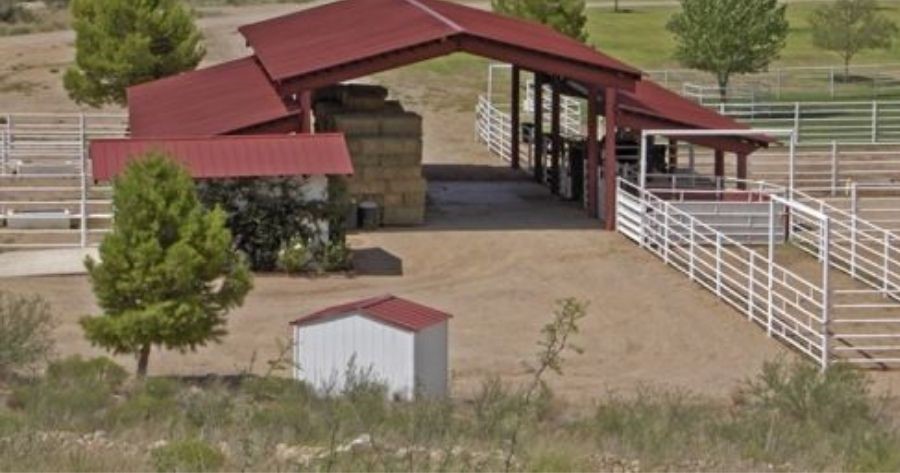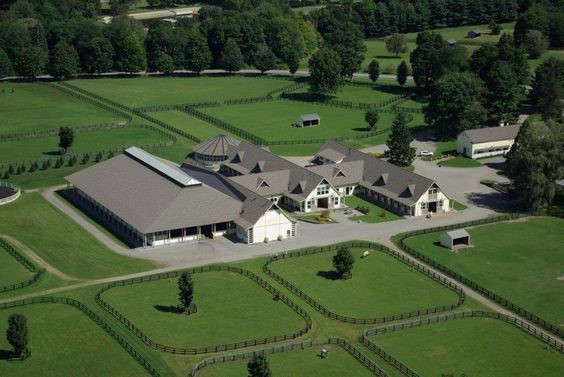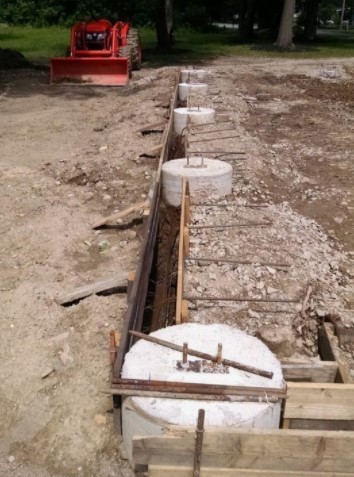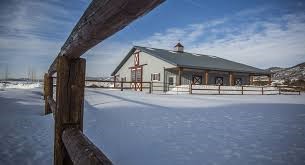Location, Location, Location!
These 3 Location Considerations are Essential to Designing Your Horse Barn
Designing your horse barn is exciting. The options and possibilities are endless, but the pitfalls are daunting!
If you’re anything like me, you’ve spent years thinking about your perfect barn. Even after building a barn, I’m still thinking. I love to tour other peoples’ barns. And I continue to add to the hundreds of pictures and sketches I’ve collected over the years.
As your dreams move closer to becoming reality, the number of decisions and things to consider will make your head swim. The most basic of those decisions is location.
Buying or Building – Location Matters
You may be planning to buy a piece of property that’s a blank slate, or you’re shopping for property that already has a horse barn. In either case, the location of that barn will have much to do with your horses’ future comfort and your own future enjoyment.
Whether you are building or buying, here are 3 things you MUST consider about your barn’s location.
1. The Climate
Why would you need to be concerned about the climate where your horses will reside? Because the weather patterns of the area determine the very most basic things about your barn, like architecture, building materials, and decisions about windows, doors, insulation, and ventilation. How hot does it get? How cold? A lot of rain? Snow? Ice? Drought?
For example, consider this barn in Arizona:

In Arizona’s hot, dry climate this shed row architecture makes sense. It’s well ventilated, and able to catch a breeze from nearly every direction. The primary horse comfort requirement for this climate is shade from the sun and potentially protection from a north wind.
There’s no need for windows, doors or insulation. The primary build material in this option is steel, however mud (adobe) and cement block are also popular.
But what if your barn will be located where snow is normal in winter, but it gets hot in the summer?
You’ll want a structure that you can fully enclose when it’s cold, but with windows and doors to open in warm weather. You’ll definitely want insulation in the walls and ceiling. This keeps the cold out in winter and keeps the heat out in summer. The primary building materials for this climate could be wood or metal, and even cement block, stone, or brick, depending on your budget.
Make sure that a fully enclosed barn has adequate ventilation. Ideally, each horse in the barn should have access to fresh air, according to Dr. Eileen Fabian, Ph.D., a professor of agricultural engineering and environmental biophysics at the University of Pennsylvania.
“The eaves, the area where a barn sidewall meets a roofline, is an ideal location for openings,” she said. “In this location, the air speed and temperature is tempered by the time it reaches the horse so it isn’t a draft.”
– Dr. Fabian
2. Local Building Laws
Building laws and codes can be huge challenges when it comes to building a horse barn. In some cases, even renovating, remodeling, or adding on to an existing barn may require permits, inspections, etc.
Every state, county, and town has building laws, requirements, codes, and by-laws. They tend to change and it’s not unusual if town departments don’t agree on requirements.
3. The Location of the Barn on Your Property
Suppose you are looking out across that beautiful blank canvas of property, thinking about the perfect spot for your barn. Maybe you are wandering around a property that is already set up for horses. In either case, be sure these points are part of your decision making process.
Sometimes an arial view of the property can help with these considerations.

Space
Okay, the picture above is way beyond MY wildest dream, but it may be perfect for you! It does give you a good idea of the amount of space you should think about for what you want to include.
Whether your barn(s) and arena, etc. will be this big or smaller, you still need to make sure that the space on your property will accommodate it/them.
Parking space and driving arrangements are important to include in your space consideration. This arial view does give you an idea of what that looks like for this property. You can see that a truck pulling a horse trailer, even a large truck pulling a LARGE trailer, could probably navigate because the road circles all the way around the barn area.
From the aerial view, you can also see that there is easy access to turnout paddocks, which is another thing you need to include in your overall design.
North-South or East-West Layout?
Wherever the barn actually sits, or will be built, take into consideration the position of the building. For example, my barn is built with doors on either end. There is a door on the east end, and one on the west end. That was a poor decision on my part! It has little to no natural airflow through it, and it stays HOT all summer.
It may not sound logical, but a north/south layout catches more of the natural summer breezes.
Access to Water and Electricity
You will, most likely, want water and electricity in your barn. If you’re buying, make sure they’re both in excellent working order. These amenities aren’t cheap to fix or redo!
If you’re building, consider if you’ll be able to access existing water sources or if you’ll have to dig a new well just for the horse barn. New wells are expensive!
Also consider how far you’ll have to run electricity. That’s not cheap either.
Site Readiness
Where I live, there are tons of people who do dirt work. You can do a lot of site modification with an excavator, skid steer, or bulldozer.
Just remember, all that dirt work is expensive!
Ideally, you want your site to be as naturally ready as possible. This means it’s fairly flat, mostly clear of trees and rocks and already drains well.

You’ll also want to make sure that the site is accessible to the equipment that will need to come in during the building process.
This might mean building roads before starting on the barn.
Conclusion
Wow. Just thinking about where to put your dream barn can make your head hurt. I guess it’s true what they say, “Location is everything!”
BUT THAT’S JUST THE BEGINNING!
There are so many more things to think about, whether you’re designing your horse barn or looking to purchase a property with a barn on it.
So stay tuned! In future posts, we’ll go inside that dream barn, and consider size, layout and the zillions of amenities that can make your barn as comfy and user-friendly as possible!
Do you have your dream barn? We’d LOVE to see pictures! You can post them in the comments!
Do you have QUESTIONS about barn building or designing your horse barn? Guess what? I got a guy we can ask! Let me know in the comments!




